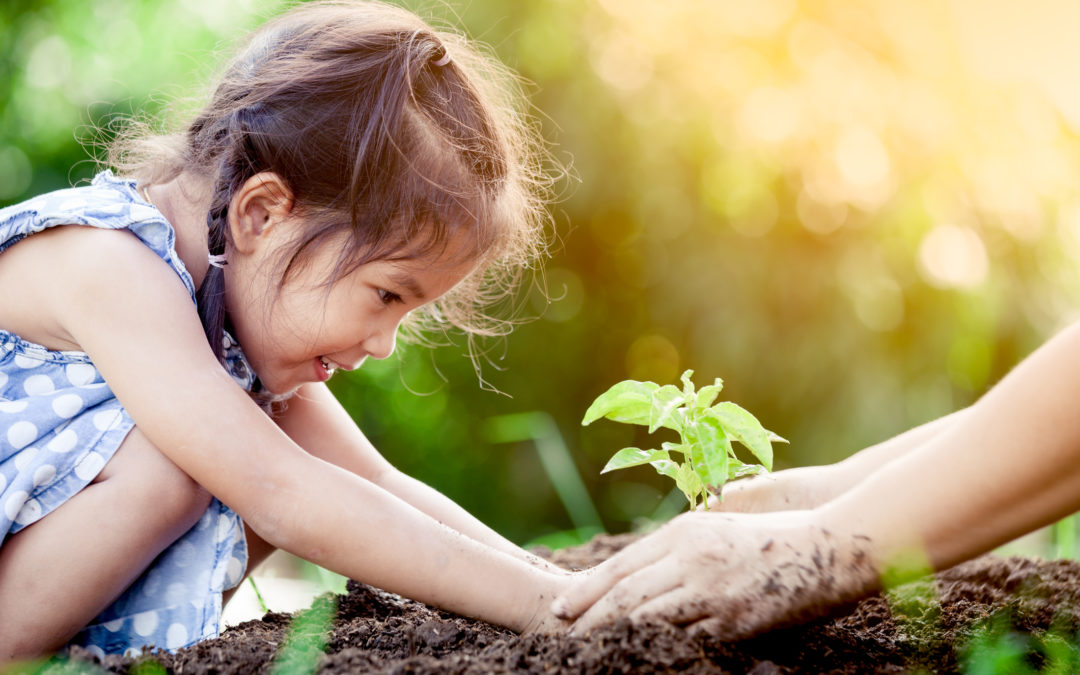Now that the weather’s finally getting a little nicer, many of us like to spend the sunny days digging in the garden. Whether you enjoy planting vegetables, flowers, bushes or trees, you’re bound to come across some insects. When that happens, it’s common to want to get all insects out of our gardens. After all, we don’t want them destroying our hard work. But not all insects are bad! In fact, some are even helpful, depending on the type of garden you have.
Let’s take a look at a few of the more common insects you might find and a few strategies for managing them in an ecological, garden-friendly way.
The Good
It’s essential to recognize that not all garden pests are, well, pests. Many of them help pollinate flowers, eat other insects who are dangerous, and can even help with soil health to encourage more productive plants. Here are a couple you might find:
Ladybugs:
I don’t know a single person who doesn’t like ladybugs, but I’m sure there’s someone out there. Ladybugs eat all kinds of other bugs that will chew up your garden, such as aphids. You can attract them by planting some Queen Ann’s Lace, coriander (aka cilantro), and marigolds.
Assassin bugs:
Ok, these guys are creepy, and I wouldn’t blame you for wanting to squash one if you saw it. Some are bright red, while others are brown, and either way, their name really fits their behavior. And that’s a good thing, because these guys like to eat a wide variety of caterpillars and beetles. But be careful, because they’re sometimes known to bite humans! That said, they’re great to have in the garden, and are attracted to dill, goldenrod, and coneflower.
Bumblebee:
There are a wide variety of bee species, and some are actually good. While it’s best to avoid the more dangerous ones (or call us to handle them), there are some that can help pollinate flowers, making both vegetable and ornamental gardens extremely productive.
The Bad
There are a handful of pests that can really wreak havoc on a garden. Unfortunately, some of these might seem benign at first, but if left unchecked can do real damage.
Caterpillars:
It’s hard to hate on caterpillars, especially when they turn into beautiful butterflies. But these guys need to eat a huge amount before they cocoon and undergo their transformation. Plus, to the average gardener, it may be difficult to distinguish between a caterpillar that becomes a harmless butterfly and one that becomes a tree-destroying moth. If you see one, you can be sure there will be others, so it’s best to try to get rid of them. If you’re worried about destroying nature, though, you can usually scoop them into a jar and deposit them into the woods, preferably far from your home (and not in a neighbor’s yard!).
Aphids:
This tiny plant killers can sometimes be difficult to detect, but don’t let their size fool you. These guys are like plant vampires, sucking the sap out of leaves, stems and roots. This results in plants not having the nutrients needed to survive, leaving them withered and brown.
Stinkbugs:
Aside from having an unappetizing odor, these bugs also can devour fruit and vegetable plants, often in the blink of an eye. They’re sometimes challenging to get rid of, so make sure that you don’t drive them into your house (if you do, here’s a post on how to deal with them).
The Ugly
For some of us, all insects and pests are ugly. But there are some that are just plain ugly (not scary like an assassin bug but not cute like a ladybug), and they can be both helpful and harmful. Particularly, I’m thinking about slugs. Slugs can help by eating and breaking down compost, turning it into productive, nutrient rich soil. They also are the prey for a wide variety of birds, who likely will eat other common pests in the garden. However, when left unchecked, slugs can also do a huge amount of damage. Luckily, they’re relatively harmless and easy to get rid of.
Found something in your garden and you’re not sure if it’s a friend or a foe? Fill out our Ask the Entomologist form and upload a picture. We’ll help you identify it, and if needed, remove it in a safe and ecological way.

